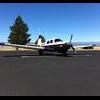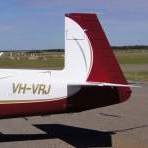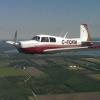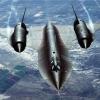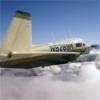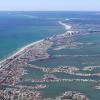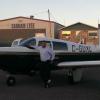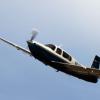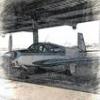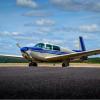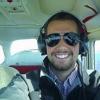Leaderboard
Popular Content
Showing content with the highest reputation on 03/22/2015 in all areas
-
Anybody ask how many quarts your taking off with? By chance is it 8-8.5, or 7.5qts? The rest of you know where I'm going with this....2 points
-
I'm reading this over generalization on the bullet train from misawa to tokyo, but I don't disagree that one can put them self in a cocoon, especially when it's more convenient. The further removed from western culture, the more convenient it becomes to "hole up". I disagree that this is a difference between civilian and government employees. Your post strikes me as a generalization about military members, where I believe it's an individual issue. I don't profess to speak fluent Japanese, but I can get around without shaming America and appreciate the advantages (namely education, friendliness and a non-existent crime rate) our eastern allies have over us. It may surprise you and many others to know that there are many military professionals that have spent years at the defense language institute to be made fluent in a foreign language (Arabic, Korean and Japanese are some if the more popular languages) only to proceed to foreign military developmental education for the very reason of cultural submersion and understanding. Lastly (and more on topic), working with the many Japanese professionals that ensure my airspace and aerodrome are safe has been a pleasure I won't forget. Like you said, they speak much better English than I do Japanese (a comment I often mention to ATC when they get frustrated with themselves over the difficulty communicating with the US traffic). It's lots if fun flying VFR from the surface to FL280 in my (the tax payers) supersonic death machine. Maybe I took your post out if context- if so I apologize. But if my interpretation is accurate, you are ignorant of the experience us unwashed military members have had the good fortune of having while stationed abroad. To me and my family, our experience does "count".2 points
-
Others will chime in about cruise settings but I just wanted to make sure you get a good pre purchase inspection. Besides the typical mechanical problems, mooneys are known for fuel tank leaks and corrosion. My 2 cents are to make sure someone knows how to check these things before you take ownership.1 point
-
1 point
-
Seems to me like lots of racism hidden as a joke, and then exclamations that anyone who calls them on it should "lighten up." Can it be that all Chineese are hard workers and industrious? I don't know. I have taught many Chineese graduate students in my mathematics PhD program over the years. There is something special about a person who is wiling to leave everything they know, to travel halfway around the world, to study in a graduate program in a language that they have not yet mastered. Usually the students I have seen do very well, through hard work. These are the go-getters. The ones who specifically go-get. These aren't the average folk I presume even from their home. The ones who got up and through great effort want to better themselves take significant risk and willing to work very hard. That takes some impressive courage. Their English usually improves dramatically as they study alongside US students, and also students from other countries. (Graduate studies especially are essentially an export industry in the US). Seems to me like these folks who leave the comfort of their home to better themselves reflect the same virtue of all the other immigrants who came and built America, the best of our past on which we built this country, over the last 200+ years. So what's the gripe? Irish, Polish, German, Swedish, Chineese, African, Eastern European, Middle Eastern, and on and on, we are a country of immigrants, and each group seems to face some racism up hill battle when they are new, and then turn around and then some of the next generations the shovel out the same. I know, I should "lighten up."1 point
-
I found an excellent article explaining the regs in simple terms. Yes, when flying en route with GPS you need to verify your points are still accurate but you only need a current database for GPS approaches. You don't need a current database for non precision such as a VOR or even precision approaches such as an ILS because once you start the approach you're not using GPS to navigate anymore. At least, you're not supposed to. http://www.fredonflying.com/Articles/IFR_Refresher/1001-IFR-GPS-Regulations.pdf1 point
-
I was supposed to go fly this morning, formation practice with Ned. Once I got to the airport, I knew conditions would be rough with the winds in the area... cancelled it all and went shopping instead. Your report Erik confirms I made the right choice. Yves1 point
-
I was just kidding about the head wind. It was a tail wind - but yes, that is my Mooney this morning. AT 17000 ft. On about 215TAS at that point just after I tipped the nose down. I did do 315 in level flight before I tipped the nose down. Actually there was very rough air below me so right after I took this shot, I pulled way back on the speed and used my speed breaks because I was worried about busting into some very rough air, which eventually I did. It was a fantastic morning, with a massive tail wind up high. I wish there was space to go even higher but it wasn't practical. I did get up to 17000 in 12 minutes. Who knows - at FL21 or FL23 maybe it would have topped 400mph! 327kts=376mph. It was 45minutes to KBAF Springfield MA (I switched from KHFD pick up like I normally do since gusts getting to 30kts were 90 degrees to the runway at KHFD but straight down the runway at KBAF - I am glad I made that decision as it was quite a rock and roll ride in the pattern nonetheless. With the speed I made I ended up waiting about 10 minutes at the FBO for grandpa to pull up with my son). Only downside - I had to come back home from KBAF back to KPTD once I got my son. I said as low as I could into the headwind but it was 10500 before I topped the heavy turbulence and it smoothed out. Then I was seeing speeds of 108 to high 120s and pushing hard on 190TAS.1 point
-
1 point
-
Excellent points, but technically you don't need an "updated" database to file /G... you just need to certify that the points in your database are still accurate. In order to (legally) shoot an IFR LPV GPS approach, though, your nav database must be current. I think you can still shoot the non-precision GPS approaches without an updated database, but I could be wrong on that. what all this means is that technically you can file /G with a 2 year old nav database, so long as the points you are flying to remain the same as on your charts and you've verified their accuracy, and when you get to your destination, fly an ILS or VOR approach legally. a handheld or ipad is a great way to keep SA. I have a 430W for legal /G flying, and use an AERA 560 as a MFD/scratchpad/ADSB displayer. They compliment one another very well.1 point
-
Many aircraft will not reach full RPM while static. Yet, will easily reach 2700RPM at some point on the take off roll or in flight. This is generally normal. Also the prop has a low pitch stop. Preventing the blades from going to a flat pitch. Adjusting this stop to achieve 2700RPM static is sometimes not a good idea. "IF" the prop gov fails, the prop blades will rest on the stop. A low pitch stop improperly adjusted will result in an aircraft that might not fly at 2700RPM. The failure of a prop gov to produce sufficient oil pressure will result in high engine RPM in flight. The pilot then pulls back the throttle to reduce RPM to 2700. Airspeed then bleeds off. At some point, generally around 80Kts, the prop is producing enough thrust at 2700 to keep you aloft. Adjusting the low pitch stop for higher static RPM simply reduces in-flight thrust with a failed gov. Most pilots are fully unaware of what happens when a prop gov fails. Some pilots try to maintain airspeeds too high, and simply fly the aircraft into the ground! Properly adjusted, a prop will produce barely enough thrust to maintain straight and level flight, at max gross, at a fairly low airspeed, max RPM.1 point
-
Prior to installing a /G GPS, I flew with a portable GPS (a 295) and filed as /A. In the remarks section I would put "VFR GPS equipped". Often in radar coverage I would get, "fly heading XXX, direct ABC VOR, when able, resume own Nav". When this happened, "ABC" was usually way beyond its service limit. There was no way that I would be able to navigate direct to a VOR that was over a hundred miles away. Was it legal? Sure, I was on a vector. But the reality was that the controller knew what I was doing and because I was in radar coverage, they were helping me out. As for flying in non radar or using a non approved GPS for real life navigation & approaches - nope. Sent from my iPad using Tapatalk1 point
-
Harley, Thoughts on primary nav vs portables... If he keeps the KLN89B and it is working as expected... He is able to navigate using the KLN89B as expected. If the color graphics of the portable make it easier to understand what he is doing. That is OK too.... It wouldn't give him the legal ability to fly WAAS approaches. Relying on a portable for primary Nav in IMC is a terrible plan A. It is too easy to have a failure. Another thing you might see is somebody navigating using a portable GPS while following victor airways. The NAV radio is technically his primary nav tool. The portable helps with situational awareness. A third thing you may see is somebody using an IFR GPS and following Victor airways. This can be a way to cover for an outdated database. Primary is supplied by the ship's VORs... There are some more specific rules to follow about updating databases vs. verifying all the points in your plan. This gets very complex when it comes to all the approaches installed around the world. The price of all the databases and how many different approaches you really fly, and all the other things... The thread about when to use GPS distances when DME distances are available is another example of how complex the rules can be. To file /G requires qualified equipment and an updated database. All of the complexity is appreciated by a few groups of people - professional pilots that need to fly in various planes with various equipment installed... - young pilots short on dough and long on memory... - ordinary pilots with extraordinary legal skills... For a private pilot, it may be a challenge to keep the database and VORs updated and logged properly. If you need to keep things simple, get a WAAS GTN and a database update plan. Get it installed properly, file /G all the time. If you need to keep things low cost, a single VOR is a valuable device. Your capabilities will be limited by the choices you make. Always have a few plan Bs... Portable nav devices, com devices and things like that. One of the most fun things to have is an updated database installed in an approach capable GPS. Unfortunately, it is one of the most expensive things to have to afford. Keep it simple at first. Best regards, -a- We were all typing at the same time... See if our opinions are the same.1 point
-
That is so awesome! I am so glad you didn't just toss in the towel and parted her out as many would have. Definitely keep us updated!1 point
-
The indicator cable may be binding. Get out your screwdriver, as the belly panels need to be removed to gain access. I would lube the whole cable if possible (I don't recall if it's sealed or just a coil). I like Kroil or Mouses Milk for cables. You should also [have your mx] look at the the cable attach point on the flap spar and make sure that it's not binding there.1 point
-
There are a couple of pireps on here for Jewell. These engines are so much simpler than what I have in my Corvette so it shouldn't cost zillions of dollars to overhaul one imho.1 point
-
You know the devil you got, just be sure you can live with the devil you may get, namely up to a 120 lb decrease in useful load.1 point
-
About two years ago, my Ovation's manifold pressure transducer started reading low (Moritz gauges). When I contacted Mooney, they said the transducer was no longer in production, but that they had a kit that used a different transducer. I ordered the kit witch included the transducer, installation instructions and a different connector. The new transducer was from Omegadyne.com. If you check their website, they have all sorts of transducers. Last year someone needed a transducer and called Mooney and they had no knowledge of the kit. Luckily I have all of the paperwork from Mooney. Note: it has worked perfectly for the last two years.1 point
-
Haven't been through this myself but maybe it will be of less hassle and more accurate to just re-weigh the entire airplane once you are finished.1 point
-
Treat it like a new engine for break- in. Your choice, straight mineral oil or Philips X/C 20W50 but run it at 65-75% power for 20-50 hours, until oil consumption stabilizes at a low value and the plugs are dry.1 point
-
Please don't forget those who are too far away to come to texas, maybe something in the north-east, I know I would register in a heartbeat. Thanks !1 point
-
I try to never think about the costs involved with the plane as long as its enjoyed and used. When it becomes a financial burden it'll be sold. Until then I will be thankful I am blessed to have it. Lets face it guys, who else has it as good as us? Its a beautiful day and I'm going flying .1 point
-
Redbird has made the model for the Acclaim TN. Mooney now has 2 or 3 of these sims. I have a feeling Redbird in HYI can turn one of these on for you and have it set up as well.1 point
-
Sometimes the depth of arrogance and lack of sense of humor on this board is astounding...humor and jokes are often at the expense of others. Not possible to not offend someone in this PC world. Humor. Something the world needs more of.1 point
-
It is puzzling. I'm surprised the Chinese just didn't buy one used Mooney, copy it and rebrand it Mooni. Then sell thousands of them on Alibaba!1 point
-
1 point
-
Sorry Dude but you're completely wrong. You still don't understand VFR vs IFR. It's ok though, I'm not trying to be mean or blame you. I think a lot of pilots don't understand and this cowboy that took 2 other victims to their deaths didn't either. Unfortunately IFR may be one of those kinds of things that you have to earn it (rating) and do it to understand it. That's why the best advice you can give to a non Instrument rated pilot is just "believe me you don't know what you're doing and don't do it". IFR literally means Instrument Flight Rules. Instrument flight rules dictate the rules by which you must fly your aircraft regardless of the meteorological condition (weather) while you are engaged in Instrument Flight Rules. Visual flight rules are kind of everything else that you are already aware of. VFR incorporates cloud clearance requirements. So for example if you are VFR in class B airspace, you must have 3 mile visibility and remain clear of clouds. If you are IFR in class B, you can have lower visibility or be in and out of the clouds. Flight into class B airspace does require a clearance and the controllers will be interested in your intentions. However, unless issued a limitation or a specific instruction, under VFR you can still go wherever you want. You can turn, you can use your own waypoints, you can change altitudes. IFR will have specific instructions and not leave those things up to the pilot. You may get a more similar treatment to IFR traffic in class B because things are so busy that the controllers need you in a certain place to keep you apart from the IFR traffic they are handling. On a non-busy day or at night, you can get clearance into Bravo and go just about anywhere you like VFR. Under IFR, (except in an emergency) you are required to fly the clearance or instructions you were given. Under VFR, you can essentially do what you want. When you have flight following, they don't tell you where to go. You go where you want, possibly advise your intentions to simplify things, and they call out traffic to you. Under IFR, ATC tells you where to go and them telling you where to go encompasses terrain and aircraft separation. Flight following does not! IFR encompasses minimum flight altitudes for radar coverage, radio coverage, navigational coverage, and of course terrain avoidance. You sir, cannot be flying IFR in VMC yourself (with an instructor you could). You can wear a hood with a safety pilot and pretend to be IFR but you are still responsible for maintaining VFR (through the use of a safety pilot). You can request a practice approach but notice ATC will say "Maintain VFR, separation services will not be provided." That means there can be other erratic VFR aircraft flying around just like you that nobody knows what they will do so you have to see and avoid. On the other hand if you make a mistake flying your approach because you are inexperienced or heck your instructor throws things at you, you can do non-standard things because you still are VFR. In other words you are not bound to strictly adhere to the rules and methods required to fly the approach. Without an instrument rating (and an instrument flight plan and clearance in controlled airspace), you just simply cannot be following instrument flight rules whether you are using the instruments or not, whether you are flying instrument approaches or not, etc. You see there is a lot more to it than what is on the surface. I think analogies to flight following and class B flying were made to help you understand the system and some of the similarities but the rules are entirely different. Please don't confuse the two and avoid calling flight "IFR" simply because it is in clouds or low visibility. It's only IFR when the Instrument Flight Rules are being followed. Anything else is flight into IMC, maybe flight by sole reference to instruments, but it is not IFR. For example if you accidentally flew into a cloud and very skillfully followed your instruments to do a maneuver to exit the clouds. You did not fly IFR. You would have flown VFR into IMC. You would have been in actual instrument conditions. And you would have maneuvered by sole reference to the instruments. IFR is not just instrument flying, but an entire set of rules that allows safe flight from point A to point B with a much lower threshold for weather conditions and the ability of the pilot to see and avoid.1 point
-
Even though I own and fly the flagship of "the breed"--I would hardly call the woodwings the black sheep. More like the wizened elders or the grand ladies.1 point
-
Did his adjustments to timing end up retarding it back to spec or did the timing get rechecked to ensure it correct. 5 degrees in timing could cost 10kts on a big 6 cylinder.1 point
-
Moving the CG aft for a given weight will reduce drag and improve performance. But adding weight just to move the CG aft will not improve performance. In other words, moving a 50lb bag of tools from the front seat to the baggage compartment will make some small speed improvement, but the airplane will be even faster if you leave the tools in the hanger.1 point
-
1 point
-
A few of you may have noticed in the wanted ads that I am looking for a few parts so at long last I am posting a useful update to this thread--and dare I say it nearly feeling good about my prospects for being back in the air very soon. The plane is now in what I believe to be capable and trustworthy hands for an annual and to repair these discrepancies. At least in my book, he has already made some terrific progress, and I've been overly impressed with his zeal for this task.1 point
-
Just finished editing down the video of my 40min flight into about 5minutes of video.1 point
-
Heat gun can be very aggressive and could damage the paintwork. I used a hair dryer with good results, just takes longer. Suction mounts are risky in aviation. They work on the principle of differential pressure, so when you climb to around 6000 to 8000 ft above the elevation where you mounted it, it will fall off. You would have seen this happen if you use a windshield suction mount for a portable GPS in the cockpit. I have mounted the camera on the wingtip before using a screw from the Nav light lens for insurance. Worked well with lots of peace of mind. Tony1 point

